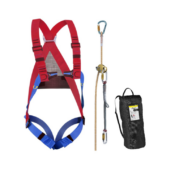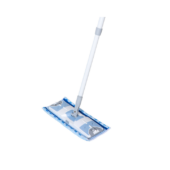Procurement organisations must understand the P2P cycle from sourcing to settlement to launch successful procurement programmes, stabilise cash flow, and save money. Top procurement leaders make procurement analysis part of their strategy. It automates and streamlines question answering, improving project management and cost savings.
We’ll explain procurement analytics and how it can save you money and time in this article. We’ll also discuss procurement best practices that can improve results immediately.
Definition of Procurement analysis
Procurement analysis shows where and how much your procurement department or organisation spends. It helps you manage costs and predict future events. It lets you analyse and refine procure-to-pay data to understand costs.
Visualised procurement data may reveal:
- Company spending on goods
- How those compare to market benchmarks
- Find the greatest deal on future purchases
- Manage cash flow and improve stats over time
Quantitative procurement analysis uses past performance, data analysis, and market data to inform future decisions. The analysis is more complex than a crystal ball, but it works like magic when done right.
How spend analytics enhances corporate results?
Procurement analysis isn’t only a nice-to-have or a habit for huge organisations because 40–80% of a company’s expense comes from outside providers. This is a big investment that must be controlled to avoid waste.
No matter your size or stage, a robust procurement analytics strategy can decrease waste and improve short- and long-term business decisions.
- Manage spending better.
- Profitability increase
- Measure performance.
- Assess supplier performance
- Instantly spot cash leaks and savings chances
7 tips to save buying costs
If your organisation is frustrated by budget overruns and untrackable purchases, you may swiftly optimise spend and boost profits.
Regardless of size or stage, procurement teams apply 7 recommended practices:
1. Organise procurement spend.
Saving money starts with a regular P2P workflow. By formalising procurement, stakeholders can see how to proceed from requisition to payment. This helps set spending guidelines, creates responsibility throughout the process, and underpins effective contract management.
NY Kids Club started saving by creating a method. They eliminated a tedious email-based purchase order procedure and managed spending across 19 sites with Order.co. Automation eliminated needless spending that drained cash flow.
2. Boost procurement data visibility
A detailed understanding of your procurement budget is needed to save money. A contemporary, automated procurement analytics technology gives you full visibility into your expenditures beyond “revenue minus expenses” accounting at closure. Complete data transparency lets you analyse data by category, department, product type, supply base, tax nexus, geography, and more.
After analysing your expenditure data, a P2P platform can provide dashboards to help you see how it’s functioning. This makes it easier to get meaningful insights and improve procurement strategy.
3. Develop strategic supplier partnerships for commodities.
Vendor collaborations benefit everyone and can save costs significantly. By building connections with preferred suppliers for high-volume and recurrent purchases, you gain purchasing flexibility and bulk discounts.
Strategic vendor alliances reduce repetitive work, due diligence, and vendor negotiation and onboarding. With a good supplier management approach and a good list of favoured vendors, you may get the greatest deals with less hassle.
4. Standardise inventories and sources.
Poor sourcing and inventory management can cost you money. Delivery delays and inventory shortages can hinder manufacturing. Rush orders can cause quality concerns, expediting expenses, and billing errors.
Reducing friction points saves hours of firefighting and stabilises cash flow. Order.co’s centralised P2P system lets you see inventory levels, predicted consumption, average shipment times, and project management forecasts to keep you on track.
5. Find cash leakage via expenditure analysis
Formal processes make workflow expense gaps easier to spot. A documented, repeatable process can help you remove typical money-wasting offenders like:
Non-preferred vendor utilisation – Buyers often spend with the supplier they think will work best or offer the best price. Stakeholders don’t see negotiated relationships that save the company money.
Maverick spending – Without stakeholder access, your chosen vendors and budget parameters are pointless. They usually “buy” first and ask questions afterward without knowledge. By centralising your procurement process, you avoid one-time purchases, corporate card-based purchasing, and unplanned spending by giving everyone the game plan and guardrails.
Over-ordering or duplication—If numerous locations or departments order items decentralizedly, you may lose volume price power. Centralising the order and payment process lets you apply advanced analytics to determine the entire cost of ordering across locations, improve category management, and save money through strategic sourcing.
6. Automate AP to reduce errors and work.
Manual Purchase to Pay (P2P) administration can lead to missed/late payments, over/underpayments, information mismatching, and data entry errors. Late fines, stop orders, sluggish closings, and other costly results can result from these concerns.
Integrating supplier invoicing, reconciliation, and payment into an automated system eliminates this risk and simplifies tracking. It drastically decreases the Finance team’s time spent on repetitive tasks and frees up AP professionals to work on more meaningful issues.

















